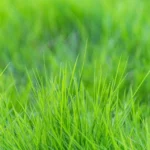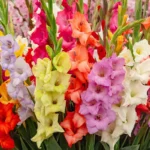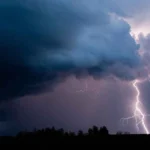
Lavender, with its fragrant blooms and versatile properties, has woven itself into the tapestry of human history, spanning millennia and continents. From its ancient origins in Persia to the picturesque fields of Provence, lavender’s journey encompasses cultural, medicinal, and economic dimensions. In this exploration, we delve into 25 intriguing historical facts and numerical trivia about lavender, unraveling the story of a plant that has transcended its botanical roots to become a symbol of beauty, tranquility, and practicality. Join us on a fragrant journey through time and discover the diverse facets of Lavandula, a herb that continues to captivate and contribute to our world in myriad ways.
Botanical Origin: Lavender, scientifically known as Lavandula, belongs to the mint family Lamiaceae. This genus encompasses a diverse group of aromatic plants, including shrubs, subshrubs, and herbaceous perennials. Lavender species are characterized by their narrow, linear leaves and vibrant purple flowers, and they thrive in regions with well-drained soil and ample sunlight. The botanical richness of Lavandula contributes to its adaptability across various climates and its diverse uses, ranging from ornamental landscaping to essential oil production.
Ancient Use: Lavender boasts a rich history spanning over 2,500 years, with ancient civilizations recognizing its multifaceted utility. In ancient Egypt, Lavandula played a role in the embalming process, demonstrating its cultural significance. The Egyptians valued the herb not only for its aromatic qualities but also for its perceived spiritual attributes. Lavender’s journey through time reveals its evolution from a ceremonial herb to a widely cultivated and cherished plant with applications in medicine, perfumery, and culinary arts.
Greek and Roman Contributions: Lavender’s historical narrative continues with its prominence in ancient Greek and Roman cultures. Both societies embraced the herb for its therapeutic properties and pleasing fragrance. Lavender played a vital role in rituals, such as cleansing and purifying baths, aligning with its etymological roots in the Latin word “lavare.” This historical use laid the foundation for Lavandula’s enduring association with cleanliness and relaxation.
Lavender’s Name: The etymology of the term “lavender” unveils its linguistic roots in the Latin language, where “lavare” means “to wash.” This linguistic link underscores the herb’s historical connection to bathing rituals. The naming of Lavandula reflects not only its utilitarian role in personal hygiene but also its symbolic importance in promoting cleanliness and well-being.
Origins of Cultivation: Lavender’s journey through time includes its cultivation in ancient Persia, marking its initial geographic roots. As trade routes expanded, the Romans played a pivotal role in disseminating Lavandula throughout Europe. This introduction to England during Roman times marked the beginning of Lavender’s widespread cultivation beyond its original regions, contributing to its global presence today.
Varieties: Lavender’s incredible diversity is showcased through the existence of over 450 different varieties. Each variant possesses unique characteristics, including variations in scent, flower color, and growth habits. This biodiversity has fueled the cultivation of lavender for specific purposes, from ornamental landscaping to the production of high-quality essential oils, catering to a wide array of consumer preferences and industry needs.
Lavender in England: The 17th century saw Lavandula firmly establish its roots in England. Lavender became a staple in English gardens, not only for its aromatic allure but also for its potential in medicinal applications. Its popularity in England during this period laid the groundwork for lavender’s enduring association with traditional English gardens and its integration into various aspects of British culture.
Lavender Essential Oil: One of lavender’s most prized derivatives is its essential oil, obtained through steam distillation of the plant’s flowers. Lavender essential oil is renowned for its versatile therapeutic properties, including anti-inflammatory, antimicrobial, and calming effects. Its aromatic profile has made it a cornerstone in aromatherapy, promoting relaxation and stress relief. The meticulous process of oil extraction highlights the concentrated potency and value derived from lavender cultivation.
France as a Major Producer: The picturesque fields of lavender in the Provence region of France have earned the country a distinguished status as one of the largest producers of lavender essential oil. The unique climate and soil conditions of Provence create an ideal environment for lavender cultivation. The vibrant purple landscapes not only contribute to the region’s visual splendor but also support a thriving industry that extends from local businesses to global markets, making France a significant player in the lavender trade.
Lavender in Perfumery: Lavender’s aromatic allure positions it as a coveted ingredient in the perfume industry. Its distinct and universally appealing fragrance makes it a popular choice for perfumers, contributing to the creation of a myriad of scents. Lavender’s inclusion in perfumery exemplifies its enduring influence on sensory experiences and its ability to evoke feelings of freshness, tranquility, and sophistication. The herb’s integration into the world of fragrance underscores its timeless appeal and cultural resonance.
Culinary Uses: Lavender transcends its aromatic and medicinal roles to find a place in culinary endeavors. The delicate floral notes of lavender add a unique flavor profile to a range of dishes, particularly desserts and teas. Lavender-infused ingredients have become a culinary trend, elevating both sweet and savory creations. Its integration into culinary arts highlights the herb’s versatility and the creativity it inspires in chefs and home cooks alike, expanding its impact beyond traditional applications.
Lavender Festivals: Lavender festivals have emerged globally, celebrating the beauty and versatility of this aromatic herb. These festivals provide a platform for lavender enthusiasts, local communities, and businesses to come together. From lavender-themed art exhibitions to educational workshops on cultivation and oil extraction, these events showcase the diverse cultural and economic significance of lavender, fostering a sense of community and appreciation for this multifaceted plant.
Symbolism: Lavender carries symbolic weight, embodying notions of calmness, relaxation, and cleanliness. Its use as a symbol extends beyond its practical applications to represent broader cultural values and aspirations. Lavender’s symbolic resonance is evident in its presence at weddings, where it symbolizes devotion and purity, further emphasizing its ability to convey emotional and cultural significance.
Medieval Medicine: Lavender’s historical contributions to medicine date back to medieval times when it was employed to address various ailments. Lavender’s medicinal properties were valued for their potential to alleviate conditions such as insomnia, digestive issues, and headaches. The herb’s role in medieval medicine reflects the evolving understanding of herbal remedies and the enduring recognition of lavender’s therapeutic qualities.
Lavender’s Commercial Value: The global market for lavender and lavender-based products has grown significantly, attaining a valuation in the billions of dollars. This economic impact encompasses not only the sale of lavender flowers and essential oil but also extends to a wide range of products, including cosmetics, perfumes, and household items. Lavender’s commercial value underscores its widespread appeal and the diverse industries that benefit from its cultivation.
Lavender Fields in Provence: The lavender fields in Provence, France, are iconic for their breathtaking beauty. These expansive fields, with their vibrant hues of purple, attract millions of tourists annually. Beyond their aesthetic appeal, these fields contribute to the region’s agritourism and stimulate local economies. The visual spectacle of Provence’s lavender fields has become synonymous with the region, creating a lasting impression on those who experience its splendor.
Essential Oil Production: The production of lavender essential oil involves a meticulous process. Approximately 150 pounds of lavender flowers are required to yield just one pound of essential oil. This intensive extraction process underscores the concentrated nature of lavender essential oil and the labor-intensive efforts involved in its production. The demand for high-quality lavender oil further emphasizes its value in various industries, including aromatherapy, skincare, and wellness.
Lavender’s Medicinal Properties: Lavender has been revered for its medicinal properties, including its role as an antiseptic and pain reliever. The active compounds in lavender, such as linalool and linalyl acetate, contribute to its therapeutic effects. These properties have made lavender a staple in natural medicine and holistic healing practices, promoting its continued use in addressing a range of physical and mental well-being concerns.
Lavender in Folklore: Lavender has woven itself into folklore and superstitions, believed by some to possess protective qualities against evil spirits. The aromatic herb was often incorporated into sachets and bouquets to ward off negativity. These cultural beliefs showcase the enduring fascination and reverence for lavender, transcending its practical applications to become a symbol of spiritual and metaphysical significance.
Lavender in Art: Lavender’s aesthetic appeal has inspired artists throughout history. From paintings and drawings to photography and installations, lavender has been a muse for creative expression. Its inclusion in art reflects not only its visual allure but also the broader cultural impact it has had on societies across the globe. Lavender’s presence in artistic endeavors contributes to its legacy as a symbol of beauty and tranquility.
Lavender in Religion: Lavender’s significance extends to religious contexts, where it has been mentioned in various texts. The herb is often associated with notions of purity and devotion. Its aromatic qualities and historical uses have made it a symbol of reverence in religious ceremonies and rituals. The inclusion of lavender in religious practices underlines its cultural and spiritual resonance, bridging the natural world with the sacred.
Lavender in World Wars: Lavender played a practical role during World War I when its oil was utilized to disinfect wounds and hospitals. The antiseptic properties of lavender oil contributed to the efforts to maintain hygiene in medical settings. This historical application highlights the herb’s versatility and its contribution to healthcare during challenging times, showcasing its relevance beyond traditional uses.
Lavender Varieties for Different Uses: Lavender cultivation involves various varieties tailored for specific purposes. Some varieties are cultivated for oil extraction, while others are chosen for culinary applications or ornamental gardens. This strategic cultivation based on the intended use emphasizes the versatility of Lavandula and the importance of selecting the right variety for different industries and consumer preferences.
Lavender’s Adaptability: Lavender’s adaptability to different climates has contributed to its widespread cultivation around the world. This adaptability makes it a resilient and versatile plant, thriving in diverse environmental conditions. Whether in arid regions or temperate climates, lavender’s ability to adapt has facilitated its integration into various cultural landscapes and its utilization for different purposes.
Lavender’s Impact on Bees: Lavender stands out as a bee-friendly plant, attracting pollinators to gardens and fields. The nectar-rich flowers of Lavandula provide a valuable food source for bees, supporting pollination and the health of bee populations. This ecological contribution aligns with broader efforts to promote biodiversity and sustainability. Lavender’s role in supporting bee populations emphasizes its significance not only in human culture but also in ecological systems and the preservation of biodiversity.









